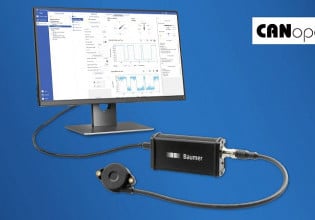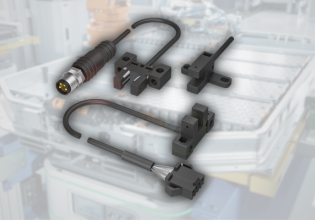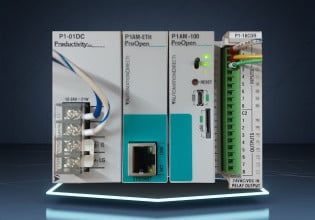Single Sensor Tackles Filling Operations, Measures Fill Heights of Bins in 3D
Banner Engineering's ZMX Series 3D Time of Flight sensor can accurately measure the fill level and volume of material in a bin, suitable for palletizing, shipping, and tracking levels in large powder, grain, or solids handling bins.
Banner Engineering’s recently released ZMX Series 3D Time of Flight sensor will make filling operations and level control more accurate, resulting in fewer overflows or bin supply depletion. The laser sensor can scan a three-dimensional area, making it ideal for solids, powders, and discrete objects stored or used in a bin.

Banner’s new ZMX Series 3D Time of Flight sensor. Image used courtesy of Banner Engineering
3D Time of Flight Sensing
The idea behind 3D time of flight sensing is for the scanner to view an entire volume and to map out the level of the material in a storage bin. Most time of flight sensing is performed using Light Detection and Ranging (LiDAR), where light pulses are emitted and their reflections collected to determine the profile and distance of the shape. The “time of flight” refers to the amount of time it takes the light to travel to and from the surface. Because the speed of light is known, the distance can be calculated.
Consider filling a tank with liquid. If the liquid is not sloshing around much, the fill level can be measured at any one point, as liquid takes the shape of the container where it is placed. Therefore, single-point laser or ultrasonic sensors can be used to measure the liquid level, as measuring one fill depth will mostly represent all fill heights. However, if the liquid is sloshing around, there will be areas of higher and lower wave crests, meaning some material could splash out of the container.
Now, consider filling a large bin with cylindrical injection molding pellets for a plastics injection molding line. The pellets will pile up, similar to sand. The level across the top surface will be uneven. Depending on the operation, removing these pellets from the bottom of the bin may leave low spots. The old solution to this problem was to place multiple laser or ultrasonic sensors, manage their integration, wiring, and mounting, and then average the fill levels in hopes of understanding what is happening inside the bin.

A simulation of oddly shaped packages falling into a bin. Time of Flight sensing can measure the fill level of this bin and look for potential overflow conditions. Image used courtesy of Banner Engineering
With 3D Time of Flight sensing, the entire top surface of the fill is known: the peaks, the valleys, the average height, the volume, and so on. This information prevents overflows and running a supply bin dry, as the sensor knows exactly where material is located in the bin.
ZMX Series Sensor
The ZMX Series is capable of providing a large field of view (60° by 45°), measuring distances as much as 8.2 feet (2.5 m) away. This makes the sensor suitable for tracking the level during palletizing and shipping operations as well as for tracking levels in large powder, grain, or solids handling bins. It can also be placed along conveyors for tracking volume and quantity.
Each sensor is equipped with two separate outputs, meaning data can be easily sent to two places, such as to a computer to alert operators and to industrial control systems. From there, the industrial control system can close valves, tap the bin to level it, open relief ports, or any number of other mechanisms to prevent filling excursions.

Banner’s software analyzes the fill level and height of a bin. Image used courtesy of Banner Engineering
Reliable Filling and Supply
The Banner ZMX series will likely find use in critical filling and use applications for powders and discrete objects. In either case, it can detect the level and volume of the material, preventing overflows and depletion of the supply bin. These sensors can be used in control loops to start or stop filling operations as well as to alert an operator of the current status of the operation. With their simple installation and ease of operation, Banner aims to improve the reliability of any automated filling or supply process.






